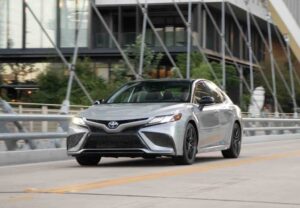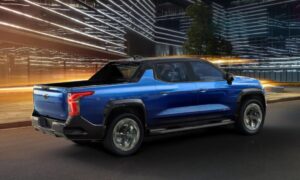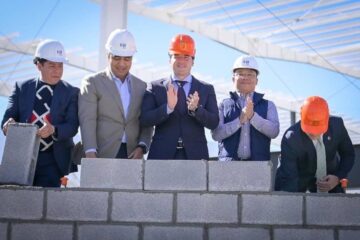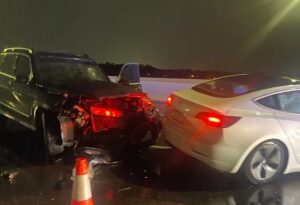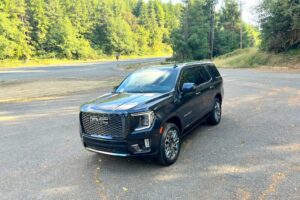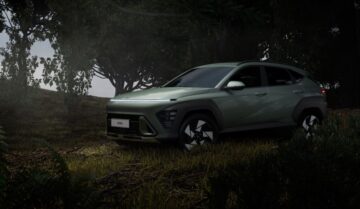Using a wind tunnel to test the aerodynamics of a vehicle is nothing new. The 1936 Chrysler Imperial Airflow was the first car to be designed using such a device and optimized for smooth air movement. But to take the design of the upcoming Mustang Dark Horse to the next level, Ford combined the latest wind tunnel technology with the equivalent of a vehicle-sized treadmill.
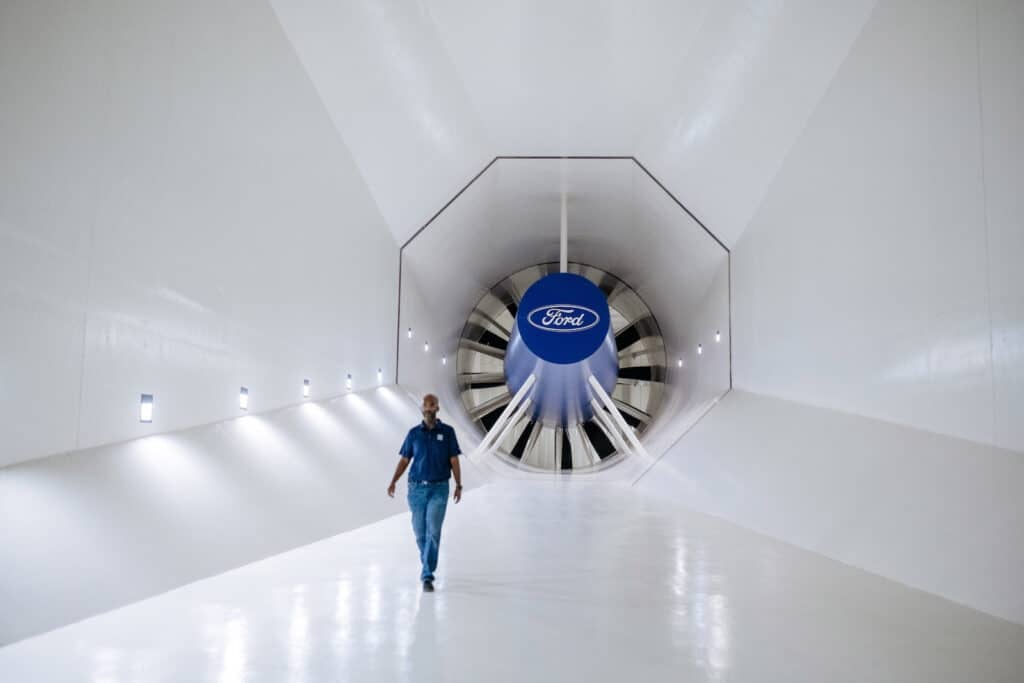
Ford calls the new development the Rolling Road Wind Tunnel, or RRWT. The device is capable of simulating wind and road surface speeds of up to 200 mph. Ford issued a release revealing the system will be used to test “efficient and performance-driven vehicles across the Ford line-up — including the next generation of Ford electric, hybrid and gas vehicles.”
“The amount of air moved by our wind tunnel is enough to fill a K-Class blimp in just over 5 seconds,” said John Toth, North America Wind Tunnels Engineering supervisor for Ford.
Moving is better than standing still
Ford says one key benefit of the RRWT is that it “gives more accurate data in terms of both wind drag and downforce compared to other earlier wind tunnel designs, which are key factors when optimizing for range and efficiency.”
The new tunnel also allows for more in-house testing that simulates open-road conditions, which can help reduce design costs while also accelerating the design process.
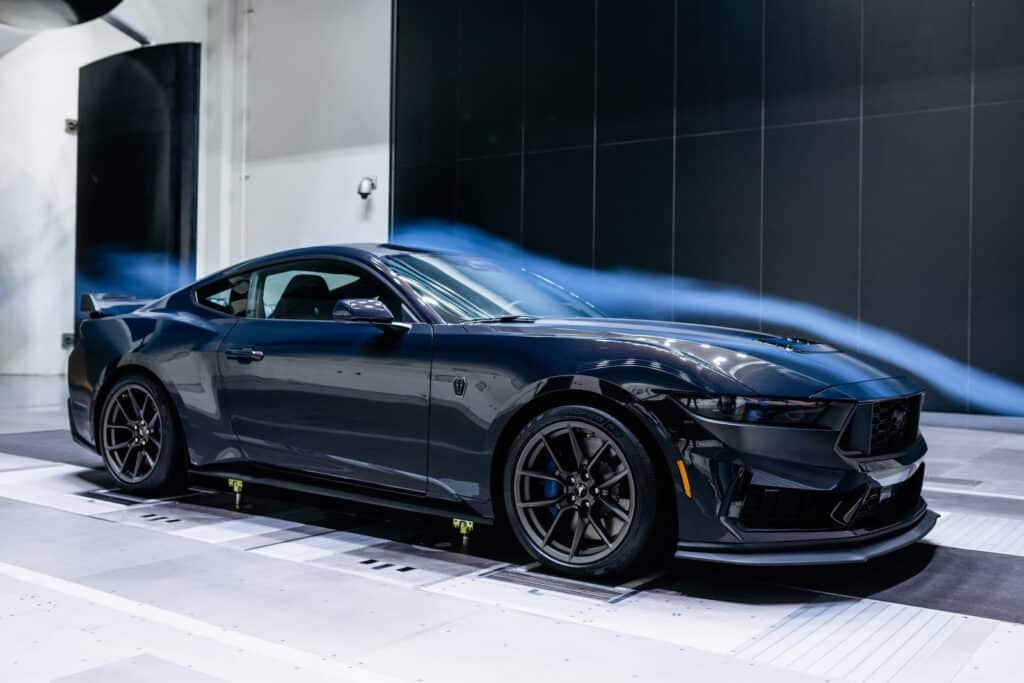
“The closer we can get to reality in the lab, the better and faster we can create more energy efficient vehicles with great on-road and track stability,” Toth said. “Testing while the wheels and tires move is instrumental to improving aerodynamics for track-ready vehicles, like Mustang Dark Horse which has to balance both aerodynamic drags and downforce.”
Computer aided design and computational flow dynamics simulated on a computer have long been used to optimize shape forms, but the new five-belt rolling road system can replicate real-world drag through an aerodynamic tunnel that enables Ford to bring the road to the vehicle, rather than the vehicle to the road.
To test for optimal aerodynamic performance, each wheel on the vehicle gets its own belt, making up the first four belts. A large fifth belt runs under the center of the vehicle to study the aerodynamics of the vehicle’s undertray when in motion.
A crane is used to switch between the five belt and single belt systems — an industrial-sized plug-and-play. The single belt, which operates at up to 200 mph, opens up a new breed of testing for high-speed performance vehicles.
The Dark Horse starts as a Guinea Pig
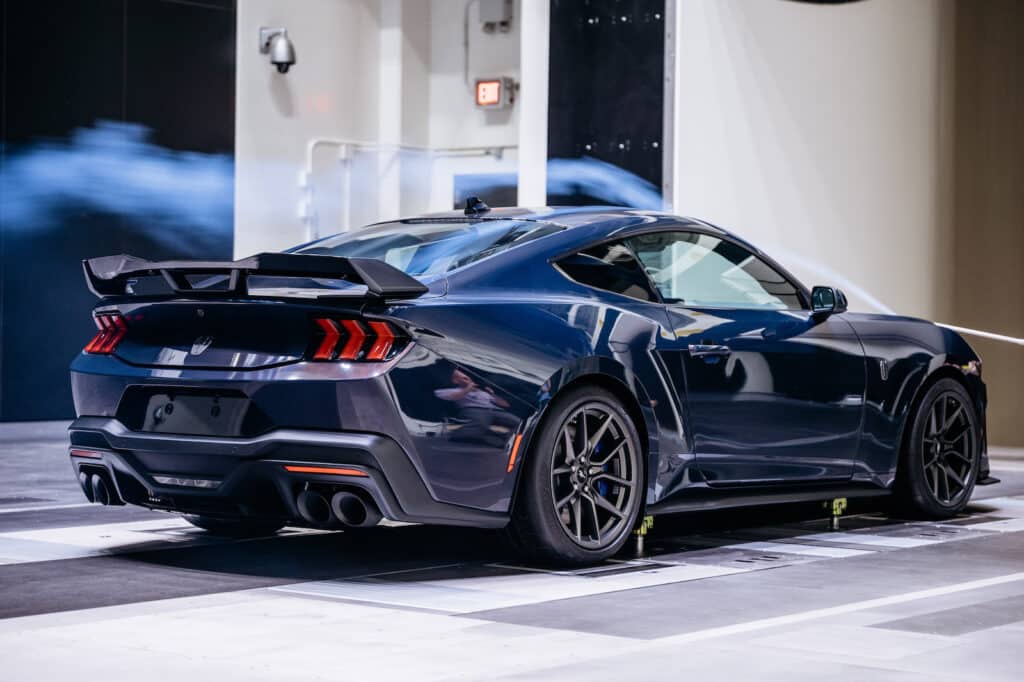
Automakers always like to optimize aerodynamics, as this allows them to meet fuel economy goals without detuning the engine or reducing size. Reducing aerodynamic drag translates directly into greater efficiency. But there are also performance benefits, and Ford officials noted the upcoming all-new Mustang Dark Horse is among the first of many vehicles to be tested in this new wind tunnel.
When designing vehicles like the Dark Horse that will prioritize track-ready performance, aerodynamicists will often trade low drag for increased downforce, which helps cars stick to the road or track and improves handling feel while cornering. When the air is pushing down on a vehicle, it offers the traction advantages of greater weight, without adding the additional mass that has to be accelerated.
One of the benefits to come out of wind tunnel testing over the years is the simple invention called the Gurney flap — named after legendary racing driver and designer Dan Gurney. Mustang Dark Horse comes with an available Gurney flap, which is an extra plate attached to the rear wing to help generate additional downforce, as well as three vertical plates coming off the under body near each front wheel called strakes. The strakes help disrupt airflow generating greater vacuum-based downforce on the underside of the vehicle, which can help the car stick better in corners at higher speeds.
What we Know About the Dark Horse
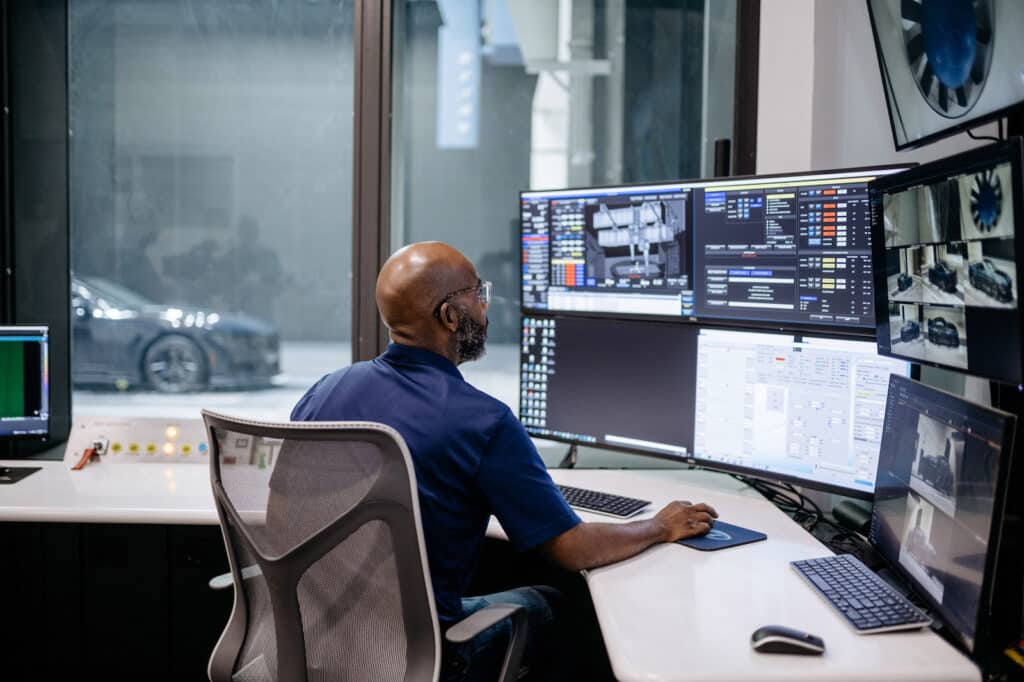
Overall, the Mustang Dark Horse includes multiple changes and additional features, including a redesigned front bumper, a lower valence, a spoiler and unique wheels. The front design is optimized to increase air flow for engine cooling, brakes and air intake, while also reducing front lift.
On the Mustang Dark Horse, the lower air spoiler and splitter is unique, allowing the car to be tuned for greater downforce. The upgraded handling package on the Dark Horse provides a unique splitter, spoiler and wheels — changes that may seem small but that make all the difference when hitting the road or track with performance in mind.
“We spent approximately 250 hours in the wind tunnel developing the 2024 Ford Mustang, which includes Dark Horse,” said Jonathan Gesek, program aerodynamicist for Mustang and Bronco. “The aerodynamics of Mustang Dark Horse along with several other factors have created the most track- and street-capable 5.0-liter Mustang to date.”
A naturally aspirated 5.0-liter Coyote engine powers the Mustang Dark Horse, producing 500 horsepower through a Tremec 6-speed manual transmission or optional 10-speed automatic transmission. Ford’s MagneRide active damping system is standard, but a handling package is optional.
Expect the 2024 Mustang Dark Horse to reach showrooms later this year. The Dark Horse and all 2024 Mustangs will be produced at Ford’s Flat Rock Assembly Plant in Flat Rock, Michigan.
- SEO Powered Content & PR Distribution. Get Amplified Today.
- EVM Finance. Unified Interface for Decentralized Finance. Access Here.
- Quantum Media Group. IR/PR Amplified. Access Here.
- PlatoAiStream. Web3 Data Intelligence. Knowledge Amplified. Access Here.
- Source: https://www.thedetroitbureau.com/2023/06/the-ford-mustang-shaped-by-the-wind/
- :has
- :is
- $UP
- 200
- 2024
- 250
- 500
- a
- About
- accelerated
- accelerating
- accurate
- across
- active
- adding
- Additional
- advantages
- AIR
- All
- Allowing
- allows
- along
- also
- always
- america
- among
- amount
- an
- and
- approximately
- ARE
- AS
- Assembly
- At
- Automatic
- available
- Balance
- BE
- been
- benefit
- benefits
- Better
- between
- body
- both
- BREED
- bring
- Bureau
- but
- by
- called
- Calls
- CAN
- Can Get
- capable
- car
- cars
- Center
- Changes
- chrysler
- closer
- combined
- come
- comes
- coming
- compared
- computer
- conditions
- corners
- Costs
- create
- created
- Dark
- data
- Date
- Design
- design process
- designed
- Designer
- designing
- designs
- developing
- Development
- device
- difference
- directly
- Disrupt
- down
- driver
- dynamics
- each
- Earlier
- economy
- efficiency
- efficient
- Electric
- enables
- energy
- Engine
- engineer
- Engineering
- enough
- Equivalent
- extra
- factors
- fan
- faster
- Features
- feel
- fifth
- fill
- First
- five
- flat
- flow
- For
- Ford
- forms
- four
- front
- Fuel
- GAS
- generate
- generating
- generation
- get
- Goals
- great
- greater
- Handling
- Have
- help
- helps
- higher
- hitting
- Horse
- HOURS
- HTTPS
- Hybrid
- Imperial
- improves
- improving
- in
- includes
- Including
- Increase
- increased
- instrumental
- into
- Invention
- Issued
- IT
- ITS
- John
- jpg
- just
- Key
- Know
- lab
- large
- later
- latest
- Level
- like
- Long
- Low
- lower
- make
- Making
- manual
- many
- Mass
- max-width
- May..
- Meet
- Michigan
- mind
- more
- most
- motion
- move
- moved
- movement
- multiple
- Named
- Near
- New
- next
- North
- north america
- noted
- nothing
- of
- off
- Offers
- officials
- often
- on
- ONE
- opens
- operates
- optimal
- Optimize
- optimized
- optimizing
- or
- Other
- our
- out
- over
- own
- package
- performance
- plato
- Plato Data Intelligence
- PlatoData
- powers
- Prioritize
- process
- Produced
- Program
- provides
- Pushing
- racing
- range
- rather
- reach
- real world
- Reality
- reduce
- reducing
- release
- revealing
- road
- Rock
- Rolling
- s
- Said
- says
- seconds
- seem
- several
- Shape
- shaped
- Simple
- single
- Size
- small
- smooth
- speeds
- spent
- Stability
- standard
- starts
- Stick
- Study
- such
- Surface
- Switch
- system
- Systems
- Take
- Technology
- terms
- test
- tested
- Testing
- than
- that
- The
- Them
- There.
- this
- this year
- three
- Through
- tires
- to
- track
- traction
- trade
- under
- unique
- upcoming
- upgraded
- used
- using
- vehicle
- Vehicles
- vertical
- was
- we
- weight
- WELL
- Wheel
- when
- which
- while
- Wikipedia
- will
- wind
- Wing
- with
- without
- year
- years
- zephyrnet

